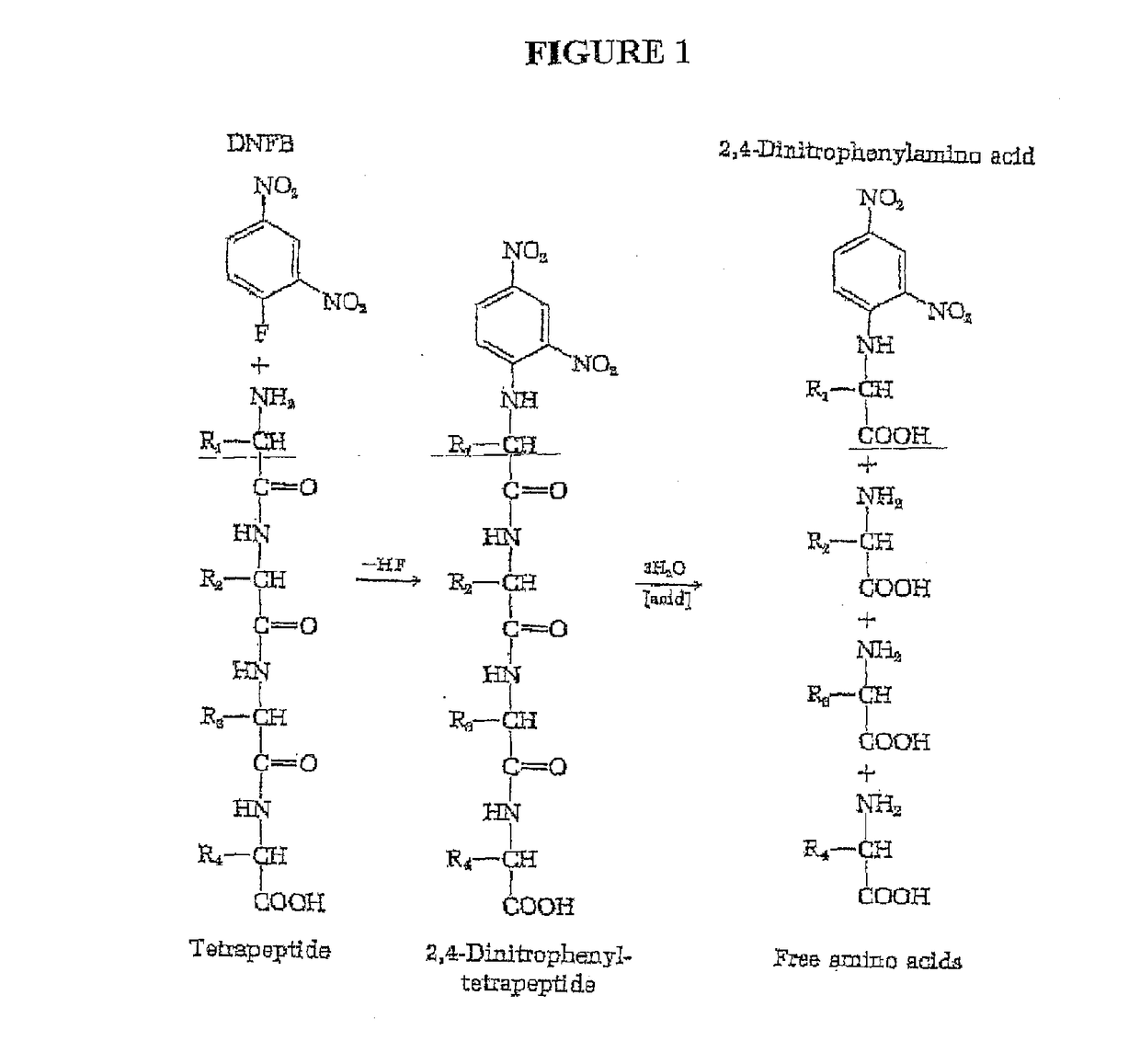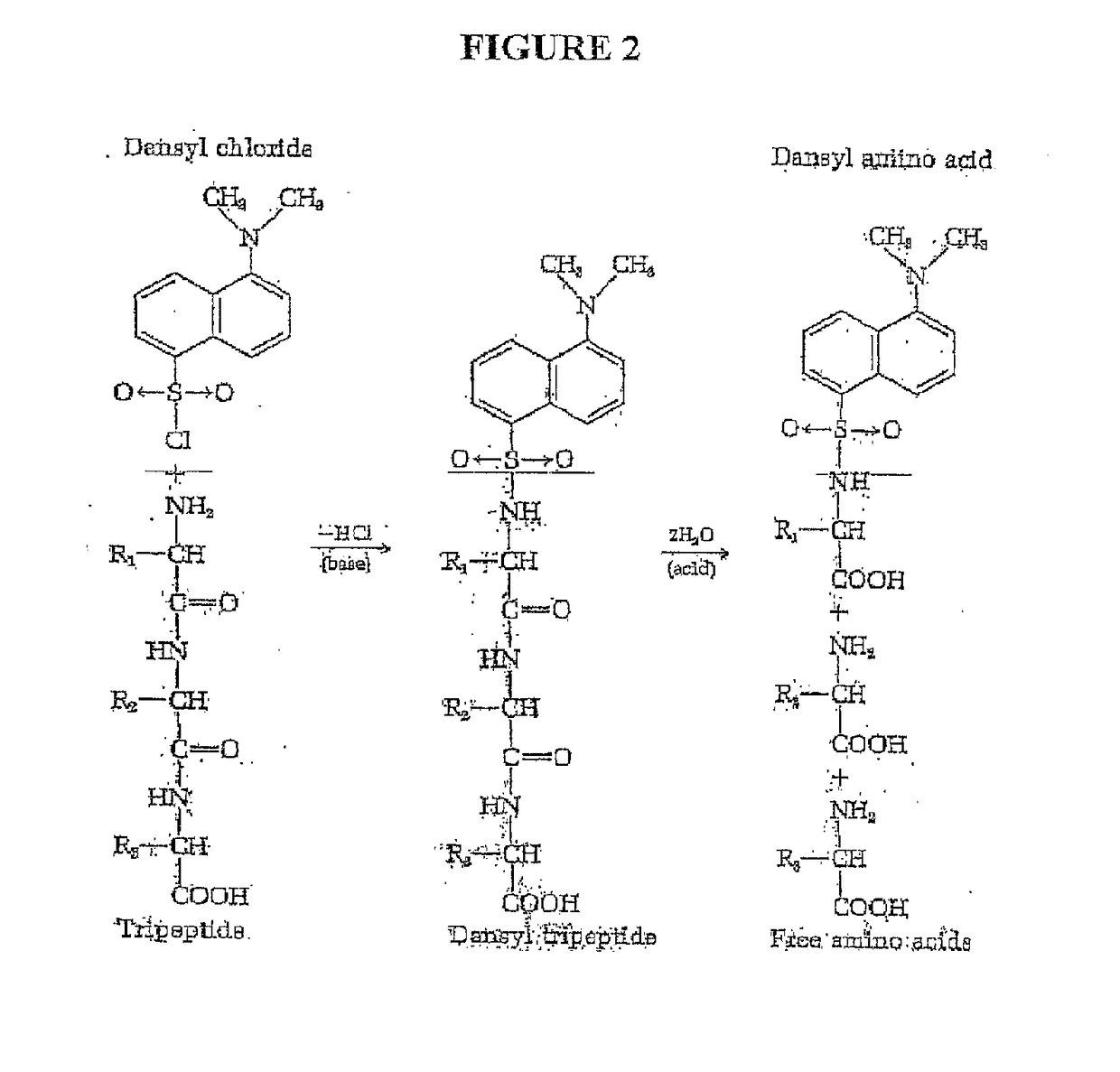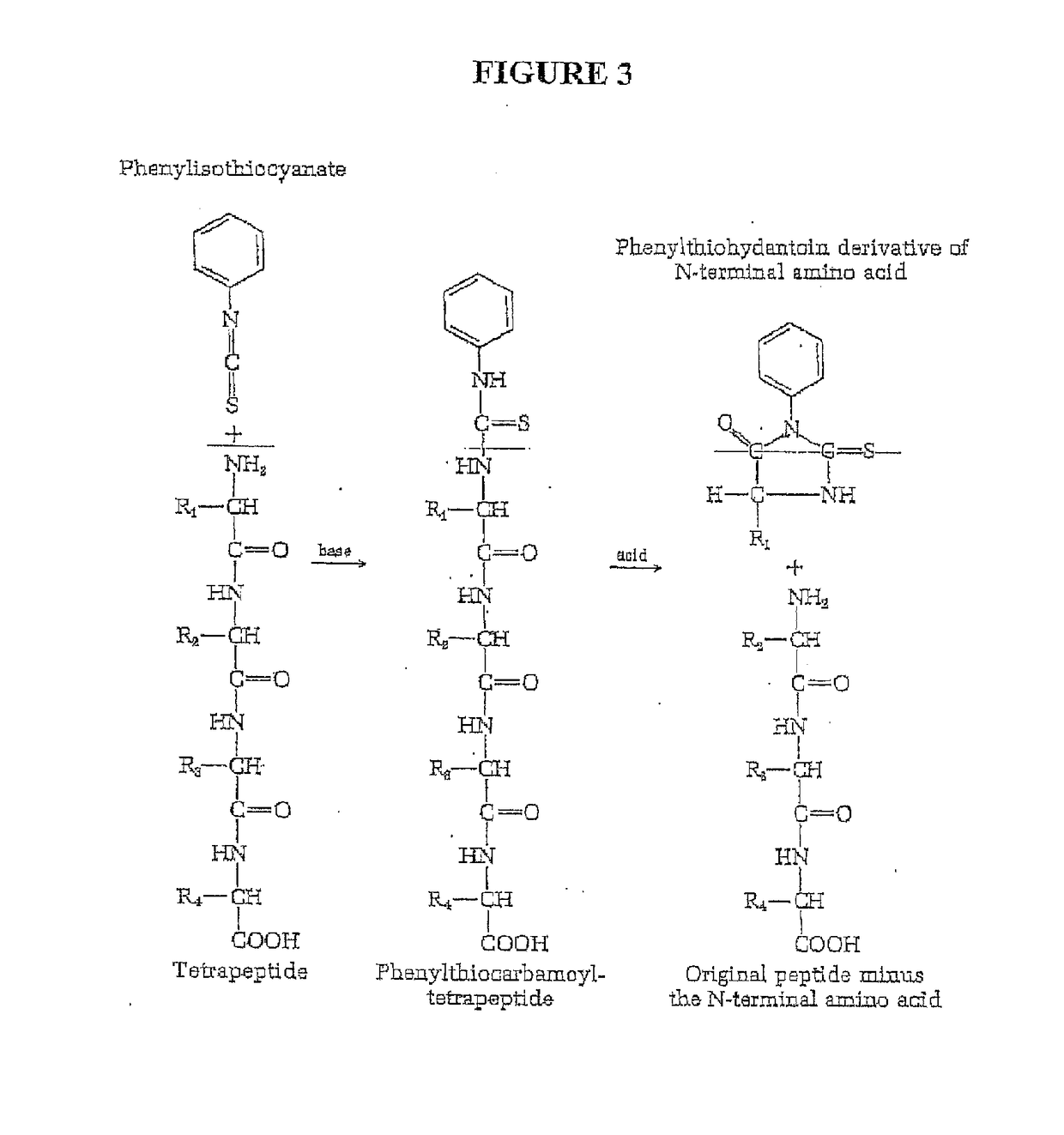Single molecule peptide sequencing
a single-molecule, peptide technology, applied in the field of identifying proteins and peptides, can solve the problems of inability to achieve similar high-throughput methods for large-scale identification and quantification of specific proteins in complex mixtures, peptides being sequenced cannot have more than 50 to 60 (more practically less than 30) amino acid residues, and the length of sequenced peptides is typically limited
- Summary
- Abstract
- Description
- Claims
- Application Information
AI Technical Summary
Benefits of technology
Problems solved by technology
Method used
Image
Examples
example i
ography on Aminosilane Slides
[0339]This example describes one embodiment for preparing a surface, involving the steps of cleaning of the slides, aminosilane deposition, and attachment of fluorophores.
[0340]Cleaning of slides: The 40 mm glass coverslips (Bioptechs Inc, Butler, Pa., USA) was cleaned by sonicating the coverslips at maximum power for twenty minutes with 10% Alconox (detergent), followed by acetone, 90% Ethanol and finally 1 M Potassium hydroxide (KOH). Between each of the different solutions, the slips were thoroughly rinsed with deionised water and sonicated in water for 5 minutes. The slides were dried at 110 C for 2 h in an oven. To completely clean these glass coverslip and hydroxylate the surface, oxygen plasma was performed. The clean-dried coverslips were placed on the platform of oxygen plasma equipment in the Center for Nano and Materials Science (CNM) facility clean room (March Plasma CS170IF RIE etching system). The operating conditions for cleaning the slide...
example ii
Methods and Materials Used for Example III
Amine Coating on Beads.
[0350]The commercially available 100 μm TentagelS-NH2 resin beads (Cat #04773, Chem-Impex International Inc., IL, USA), made of amine functionalized PEG chains grafted on polystyrene beads, was used as such for the experiments. For the preparation of 100 μm glass beads (Cat #4649, Sigma Aldrich, MO, USA) with an amine functionalized surface, the beads were loaded into syringe with frit (Cat # NC9214213, Thermo Fisher) and first cleaned by repeated washes of 5% Alconox (detergent), followed by acetone, 90% Ethanol and finally 1 M Potassium hydroxide (KOH). Between each of the different solutions, the beads were thoroughly washed with de-ionized water. The aminosilane coating step was carried out by gently shaking the cleaned beads for 1 h at room temperature in a solution of 10% Aminopropyltriethoxysilane (Cat # SIA0610.1 Gelest Inc., PA, USA) in the acidified 5% v / v of acetic acid / methanol solvent. The beads were washe...
example iii
eads as a Platform for Immobilizing Fluorophores and Peptides and Effects of pH on Imaging Buffers
[0357]This example demonstrates embodiments for using beads, including optimizing the chemistry, i.e. by image acquisition and processing and quantitating the fluorescent peptide density (see FIG. 35) for immobilizing fluorophores and peptides.
[0358]Among the number of other commercially available beads such as controlled pore glass, magnetic beads, polystyrene beads etc., Tentagel beads have a set of advantages for this study due to their compressibility (suitable for imaging by sandwiching them between glass slides), high peripheral density of functional groups (enables quantitation of bound peptides and discriminating the non-specifically attached peptides) [McAlpine S R, Schreiber S L. Visualizing Functional Group Distribution in Solid-Support Beads by Using Optical Analysis. Chem—A Eur J. 1999; 5: 3528-3532.] and availability as micron sized beads (facilitating imaging and ability ...
PUM
| Property | Measurement | Unit |
|---|---|---|
| thicknesses | aaaaa | aaaaa |
| wavelengths | aaaaa | aaaaa |
| wavelengths | aaaaa | aaaaa |
Abstract
Description
Claims
Application Information
 Login to View More
Login to View More - R&D
- Intellectual Property
- Life Sciences
- Materials
- Tech Scout
- Unparalleled Data Quality
- Higher Quality Content
- 60% Fewer Hallucinations
Browse by: Latest US Patents, China's latest patents, Technical Efficacy Thesaurus, Application Domain, Technology Topic, Popular Technical Reports.
© 2025 PatSnap. All rights reserved.Legal|Privacy policy|Modern Slavery Act Transparency Statement|Sitemap|About US| Contact US: help@patsnap.com



